Since its first reveal, Ghostwire: Tokyo had intrigued a lot of people, whether they like FPS games or not. A big part of that intrigue was the first-person “ninjutsu” aspect in the trailers combined with the history of Tango Gameworks delivering some off-beat but solid horror games. Imagine being a ninja, fighting demons in a neon-lit Tokyo while enjoying the beauty of casting ninjutsu spells in a first-person perspective. If you have ever had fantasies of living as Naruto, Ghostwire Tokyo seemed set to deliver upon those.
After playing through the preview of Ghostwire Tokyo and later being able to get my hands on the complete version of the game, I’m not so sure if those Konoha ninja fantasies hold true in the context of this game.
Ghostwire: Tokyo’s story is strange at its best and absolutely bonkers at its worst. The game opens with a cutscene where the main protagonist, Akito, is dead because of an accident. He is then possessed by a friendly neighborhood ghost later revealed to be KK (what was KK doing or occupying before him is unknown even towards the end of the story).
The story deals with loss, grief, abandonment and many other things. It sounds good on paper and I thought the end will bring up a lot of emotions when these grievances will be resolved. But oh boy was I wrong. Ghostwire Tokyo literally throws away everything it builds on in the first two chapters as soon as you start the third act. The story goes nowhere and lots of characters (Hello Ed?) and their stories remain unresolved. This is the first game I have played in God knows how long which has a beginning but no mid or end.
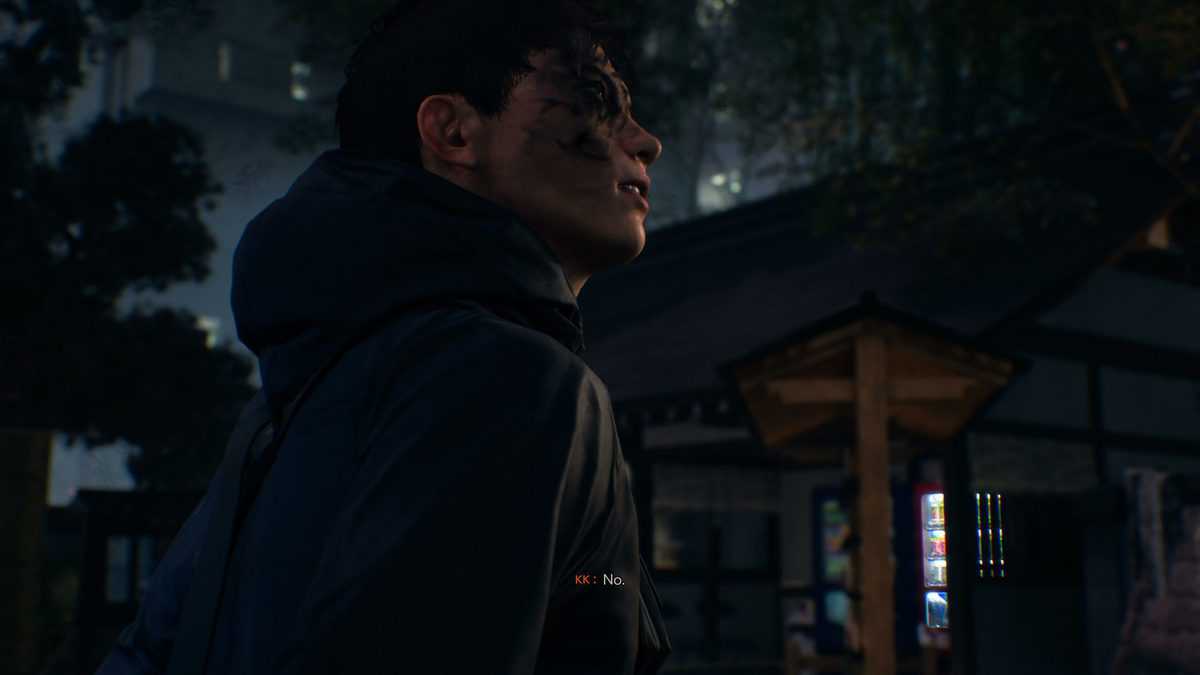
Akito after waking up tried to make his way towards the hospital where his sister was admitted. But he soon realizes something is very wrong with the city. All of the residents of Shibuya have vanished due to a mysterious fog. Only their souls remain which are being abducted by “visitors” from the otherworld. On reaching the hospital, he realizes it is the work of some Hannya masked man and his group who are there to abduct his sister for a ceremony.
GWT is your typical C-grade revenge/rescue story with absolutely no payoff in the end. This is it. There is nothing more to the story. Other than why Akito’s sister is in hospital and stories of some characters you meet along the way. This is not something you haven’t seen or watched a thousand times before. Some games have side missions with more story and resolution than the whole plot of GWT.
A side story in Elden Ring (comparison is inevitable because GWT is released with a full price tag alongside two heavy hitters this year including my GOAT, Elden Ring) has you go through time and space to find someone who has been dead for ages. The payoff was huge, unlike GWT where I was left wondering what happened to Ed and all the others? At least give me a cutscene so I can have closure. I wanted to visit KK’s family and have a heart to heart with them
There are few sequences in GWT where I felt genuinely excited only for my excitement to be marred by mediocre gameplay and no stakes whatsoever. Finding an underworld motorbike was exciting and made me feel like a child again. Going from point A to B doing the same thing over and over again to complete the sequence was not. I didn’t even get to drive the damn thing in the game at all (the whole sequence to clean tori gate and go fetch underworld oil was at least an hour-long).
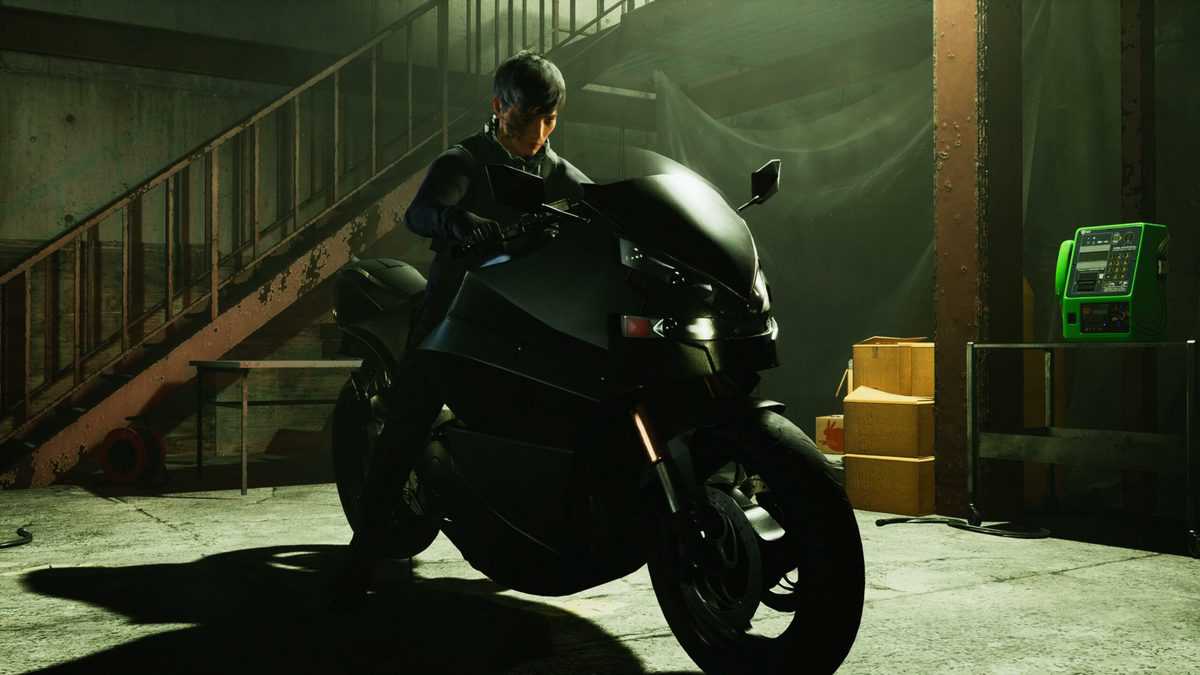
Once again, zero payoff for the effort. Another example was the first boss battle (that didn’t happen until the mid of the game). It was exciting to say the least. The boss design not only scared me but I had to change my whole strategy for it. What followed was an utter disappointment. Minor spoiler: there are four boss battles in the game (you will find it out towards the end of first chapter so no big deal). The rest were throwaways with no strategy required. You can literally spam health items and hit them to death. It was a massive downfall in quality and design.
The best thing about Ghostwire: Tokyo is its VA. This game is meant to be played with Japanese VA. The actors have put so much effort into the dialogue delivery and it is nigh perfect. The disappointing part about this is the voice acting is wasted on forgettable characters and storyline. The main character, Akito, is just a teenager trapped in the body of an adult. He is the most average character ever created.
With zero personality of his own, Akito is being carried by the voice actor throughout the game. The same goes for KK and the rest of the cast. After finishing the game, I have already started forgetting their names. One thing I want to mention here is that GWT is best played with headphones. In fact, you should only play it with headphones on. Sound design is just that good. You can hear the ghosts and their whispers from a distance. Also, 3D sound effects are mind-blowing.
This brings us to the elephant in the room. Gameplay. GWT plays in first-person perspective. The main weapon of the game is ethereal weaving. A mysterious power bestowed upon Akito by KK where he makes strange hand signs to fire bursts of energy. You fire elemental energy from your right hand (R1) and block incoming attacks with L1. The game follows conventional open-world tropes but doesn’t have an open world at all.
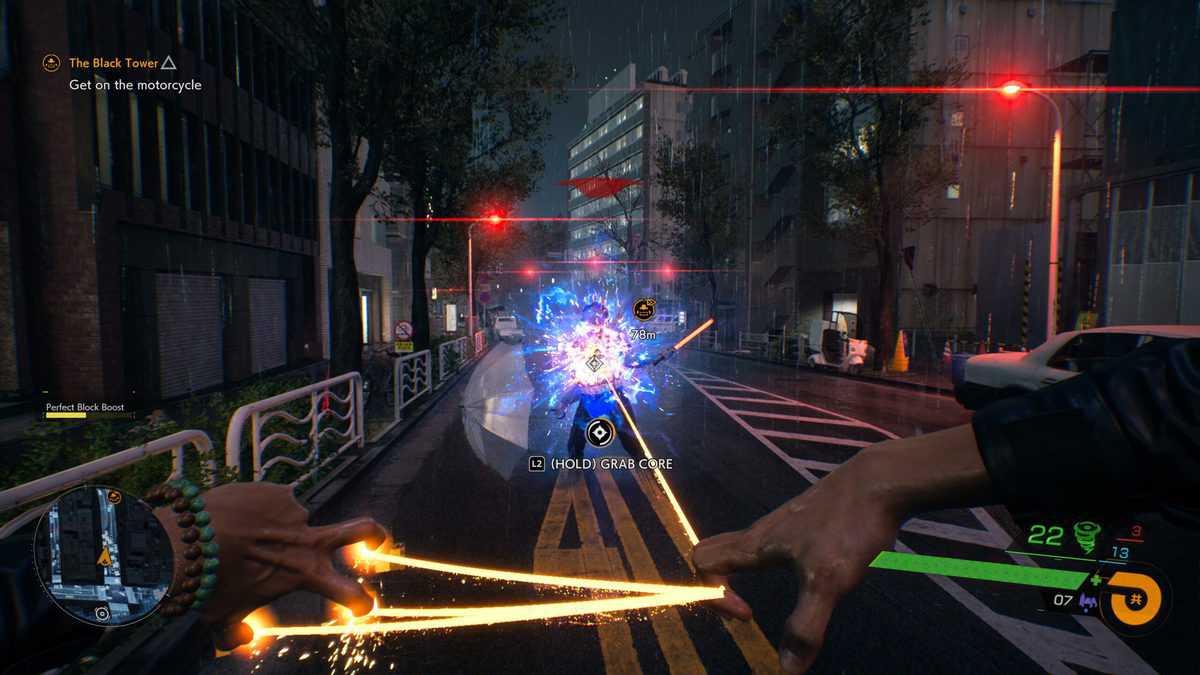
You have to go to Tori gates (TGW version of towers), clean them so you can advance forward. Most of the area is covered by fog which kills you if you stay in it for long. So to clear the area of fog, you have to clean tori gates of corruption. Cleaning the tori gates present you with rewards.
For combat, in addition to wind weaving, you get fire and water weaving. Wind attacks act like fast bullets with less damage. Fire attacks do a lot of damage but are limited in number. Water attack has limited range but breaks the defense of enemies. Each attack has a charged variation too which can help with enemy hordes. Other weapons include a bow and talisman. Finding the bow is still my favorite sequence from the game. Unfortunately, the bow is underwhelming to use and it feels no different from using your weaving energy.
Plus finding arrows is way more difficult and the only choice is to buy them at vendors. The rest (talismans and weaving energies) you will find from Tori Gates without any additional effort or mind-bending sequence (kill the enemies guarding the gates, clean the gate, take your next reward. Rinse and repeat). Talismans provide additional support but are difficult to come by. They can be purchased from shops.
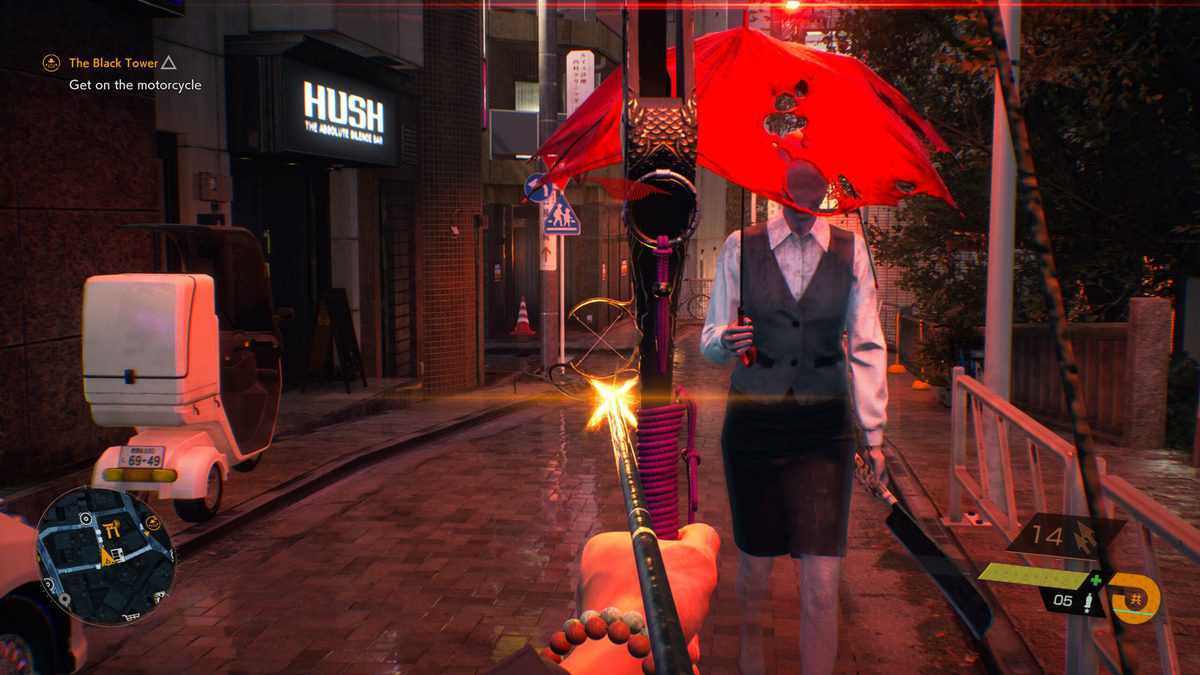
The map of the game is littered with objects but thankfully you can use filters to make it more understandable. A game that puts zero effort into gameplay, story and characters, it was a pleasant surprise to see this much effort being put towards the user interface and its design
Ghostwire Tokyo offers three types of upgrades. For the character, weaving energies and bow. All of them are really insignificant and you can finish the game on hard difficulty without getting a single upgrade. To increase your weaving capacity you need to find Jizo statues and to increase your health just upgrade your synergy level by doing main missions or collecting souls.
Souls of Shibuya residents are scattered throughout the city and you need to collect them and send them safely outside of city bounds via payphone. It earns you lots of experience points and meika (in-game currency). Meika can be used to buy food items from cat yokai merchants, which permanently increase your health bar in addition to refilling it or buy attire/soundtracks/kk notes.
Stealth is another mechanic that helps save weaving energy. Most of the enemies can be taken down from behind in one hit as compared to fighting them head-on (which consumes a lot of weaving energy). Weaving energy can only be refilled by destroying enemies, possessed items or dying.
There are two types of traversals in Ghostwire Tokyo. Horizontal and vertical. Vertical movement seems interesting at first but it is just to clean out-of-reach Tori gates or collect the lost souls. It is only limited to certain areas as you need assistance from another Yokai (tengu) to reach tall buildings. You can unlock a skill (only useful skill in the game) where you can summon your own tengu and reach different places. For that skill, you need magtama which can only be obtained by completing side missions. Gliding is another aspect of vertical movement. You can glide in the air for three seconds and it helps in moving from one building to another.
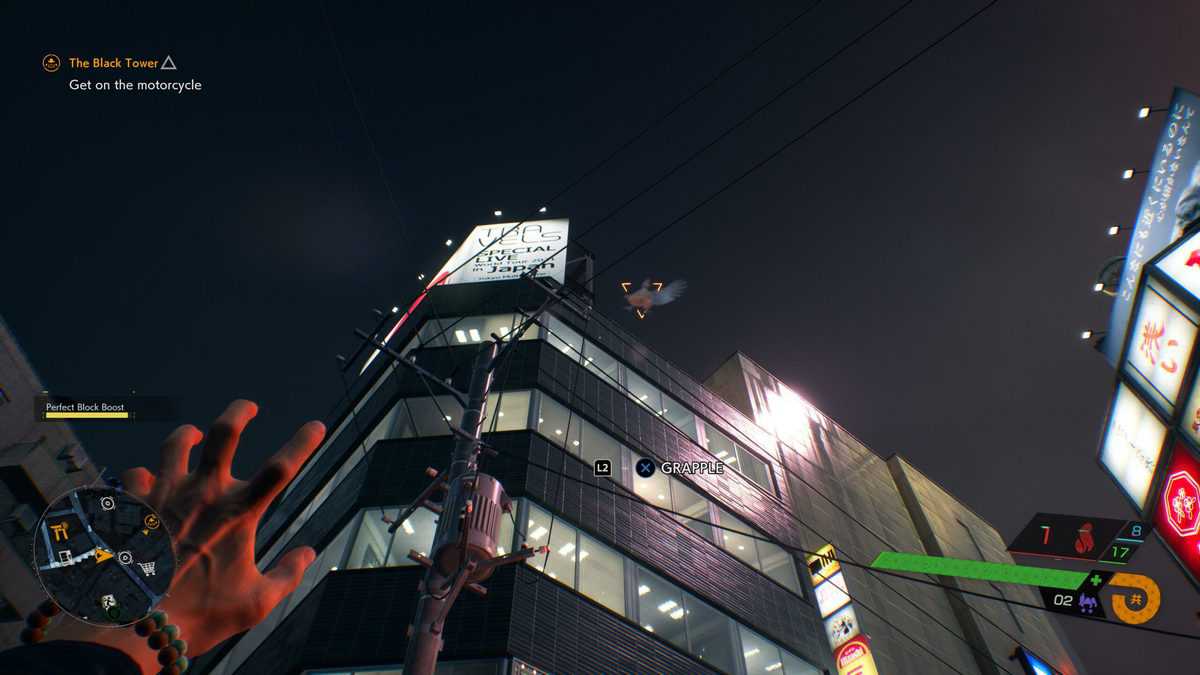
Side missions are mostly arena-based fights or fetch quests. You will come across some beautiful stories but the way they are approached makes them a chore instead of being fun. You have to clean a haunted bathhouse, go fight in arena. I ended up doing all the side missions (minus one) but it felt like I was doing the same thing over and over again.
The game borrows so much from other games in terms of gameplay but forgot to innovate. Nothing comes together in end and every mechanic feels like a standalone instead of a part of something whole. I sound so mechanical and devoid of emotions talking about the gameplay because it failed to evoke any emotions inside me. I see an enemy, I spam them with attacks. They don’t pose any danger at all. There are no stakes. No incentive. Every time I had to fight, the only thing I could think of was “oh, here we go again”.
I want to talk a bit about enemy design here but want to leave most of it for people to discover. There are 8 types of enemies and their variations. A slow-moving enemy with hard-hitting capabilities. A fast-moving enemy with weak attacks. A mini-boss style enemy and its powerful iteration. The flying ones and four bosses. The enemies lack variety and they don’t pose any threat throughout the game.
All of the boss battles are crammed between a time span of two hours. There is no structure to the game. No direction. No sense of enemy placement or design. They are not even scary to begin with. Akito is the most powerful person in the whole game. I remember when I first played Resident Evil 4 or The Evil Within. Some enemies scared me shitless. Fighting the chainsaw man is still as scary as it was almost 15 years ago.
One major part of the game is your spirit sense (much like detective vision from Arkham games). You press square to highlight the points of interest in the game (pun fully intended). It allows you to see enemies, their movement, cursed objects, meika boxes and even animals of Shibuya. Petting and feeding the dogs never get old though. The game goes off-track in its third chapter and mostly holds your hand (or forces you) to proceed. The game lacks any excitement of discovery. All the buildings in Ghostwire: Tokyo are the same, all the roads and blockades. You use your spirit sense to locate corruption, clean it and move forward.
You use it to find tracks of people. You use it for everything to the point that you start wondering why are you even playing the game when someone doesn’t want you to play the game by yourself. The freedom in the game is an illusion. You can fast travel via Tori gates that you have unlocked and that’s it. The rest is exactly the same. The reason I have come to abhor open-world design is that I have to do the same thing (with zero innovation) over and over again to proceed. And GWT is absolutely no different in this regard (with lesser freedom)
As can be expected from most console titles, Ghostwire: Tokyo offers very few options on PS5. You can change motion blur (thank god). In addition to it, there are various modes regarding frame rate and resolution. Performance mode is the best among the ones I have tried and you can change them on the go. It tries to attain 60fps at the cost of resolution. The game looks good on a 4k screen but I won’t call it groundbreaking unlike games from Sony first-party studios.

Returnal, Ratchet and Clank, and HFW have set the bar way too high for AAA games and their graphics. GWT falls really short of that standard but it carries the same price tag. Loading times are fast. Like really fast. I haven’t encountered any game-breaking bug (minus one side mission that I can’t complete because a certain event doesn’t trigger) but the performance can take a serious hit with rapid camera movement. It feels juddery and hopefully will be fixed in a future patch. I am actually pleasantly surprised by the technical aspects of the game. It is not perfect but it is easily playable at an acceptable frame rate with decent visuals from start to finish. Can’t say that about many games on launch.
Three things I didn’t talk about are the attires, music and prayer beads. Prayer beads are basically buffs that can be equipped to enhance your attacks or defense. You find various music tracks by completing missions, purchasing them or finding them. They can be played any time through the game. The same goes for the outfits which can be equipped any time. One thing that I find really interesting about the game is its compendium.
Anything you take (collectibles, consumables, attire), interact with (notes, items) or any characters/enemies you come across, their details are stored in it which you can read at your leisure. This is one thing I am a huge fan of since The Witcher 3. I can go back and read up on the lore of any ghost I have taken down whenever I want. Their origin stories are well elaborated. I wish this kind of effort had also been put into the game and story in the first place.
GWT has 6 chapters with chapter one being a tutorial and another chapter just cleaning the Tori gates. It took me around 15 hours to finish the game along with a lot of side stuff. The game can easily be finished in under 10 hours without leveling up even at hard difficulty. In fact, out of these 6 chapters, the last 2 have a combined length of 1 hour where you just have to deal with three boss battles.
This brings me to my closing point about Ghostwire: Tokyo. My thoughts on this review are as scattered as the game itself. But at least I will try to wind it all up unlike the game itself. Ghostwire: Tokyo carries its AAA badge with honor (full price tag) and is being published by one of the biggest household names, Bethesda. Tango Gameworks has a pedigree of amazing games and I jumped on the hype bandwagon as soon as I saw another game developed by them. However, Ghostwire Tokyo can easily fall into the average games list I have ever played in my life and this makes me a firm believer in “just because you can doesn’t mean you should”.
